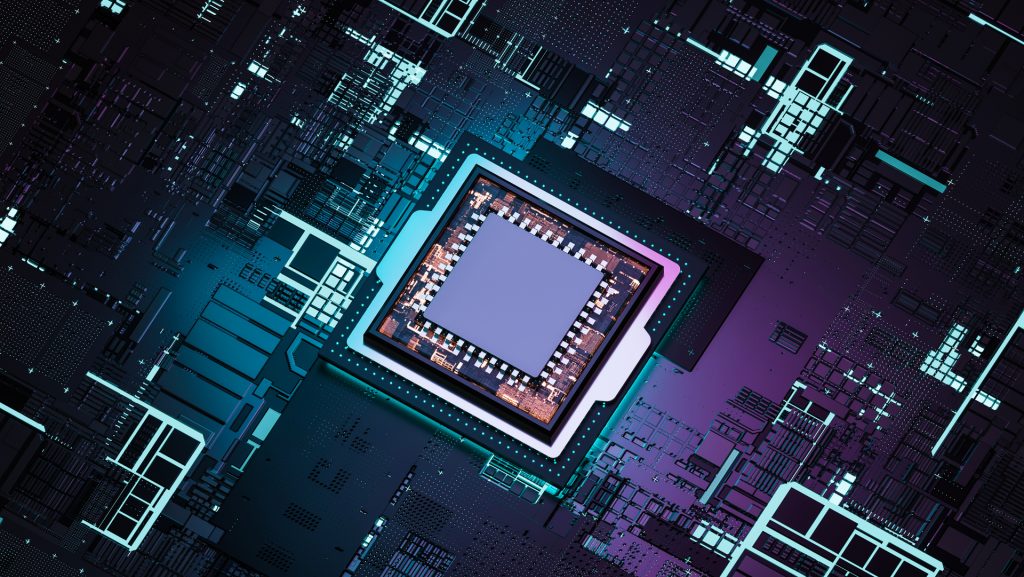The Internet of Things (IoT) domain is at the forefront of global technological growth. However, many companies still face many barriers stopping them from adopting IoT technologies. Referring to a Bain & Company Technology Report 2022, 39% of 490 survey respondents chose information technology (IT) / operation technology (OT) integration as the biggest obstacle in 2022, hampering them from full-blown IoT adoption. Basically, IT/OT integration is about smooth interaction between hardware (OT) and software (IT) components, which is sometimes difficult to achieve and requires lots of effort.
Such revolutionary solutions as the Rust programming language can help IoT manufacturing companies set up an efficient IoT environment by making digital and physical worlds work in sync. As Mykhailo Vyshinskiy, chief delivery officer at Yalantis says, let’s learn from this article what makes Rust so disruptive and how you can benefit from it for your IoT projects.
What is so special about the Rust programming language?
Rust is the most loved and wanted systems programming language right from its first release in 2015. Developers like it for its memory safety and frequent compiler checks that ensure they deploy in production practically clean code. The language isn’t easy to learn but it’s definitely worth it. Rust is a low-level programming language that still can use high-level programming concepts when necessary for better system performance. For more in-depth information on Rust’s popularity, distinctive features, and Rust use cases, check out Yalantis’s article. It can be also helpful if you’re already considering Rust development services for your IoT company.
Businesses, in turn, decide on hiring Rust engineers to boost the work of their applications on the server side and ensure they use the maximum capacity of their hardware so that not to purchase new units. Thus, Rust is a modern and promising programming language, created to tackle modern business issues in a much safer and more efficient way than older programming languages like C and C++.


The latter languages are considered memory unsafe, meaning that they potentially can cause lots of software vulnerabilities as a result of incorrect memory use. Fraudsters can use these vulnerabilities to their advantage and compromise the system. And memory bugs are considered the most widespread. After the analysis of iOS 14 in 2021, 60% of all bugs were the result of memory unsafety. In this respect, Rust comes to the rescue as its creators wanted it to be as memory-safe as possible.
Such providers as Google, Huawei, Microsoft, Meta, AWS, Mozilla, and Atlassian decided to use Rust.
In the next section, we’re moving from general to specific and discuss whether Rust can be deservedly called an IoT programming language.
IoT network issues Rust can help to solve
Memory-safe Rust allows for the development of reliable, secure, and stable software solutions that won’t need frequent updates and bug fixes, which can be especially useful and cost-efficient for the IoT domain with lots of connected devices. However, we’d like to make a disclaimer here that Rust is only a supportive solution for your IoT project, it can’t solve all the technical problems that don’t fall under its responsibility.
Let’s discuss a few more typical IoT issues, for which Rust can be helpful.
Unstable bandwidth. The more devices are connected within an IoT network, the more data they capture in real-time and send to the data centre. Writing firmware for IoT devices in Rust programming language can result in stable and high bandwidth of practically any IoT network. As we know Rust is a memory-safe language which makes it perfect for directly working with hardware as there are almost zero chances that there will be any bugs (at least memory related) that would be especially hard to detect on the hardware level.
Interoperability issues. In the IoT context, we need software for both devices and server level that processes data from those devices. Smooth integration between physical devices’ firmware and server software is a common issue when it comes to setting up a connected IoT environment. And Rust is good for developing low-latency software for both levels which then simplifies the connectivity between the two. The Embedded Rust community provides lots of tools for different operating systems and families of chips to simplify and streamline development.


Security issues. IoT network security is also a major pain point across the industry. Rust is capable of minimising software vulnerabilities making the network a much harder catch for malicious attackers. However, since this programming language is relatively new, you should work with expert Rust engineers to ensure a truly reliable and secure IoT solution. Plus, IoT security is an intricate matter and Rust here is again only a supportive element, which can help enhance the overall IoT network security.
Having discussed core IoT issues for which Rust can be a proper solution, let’s switch to the benefits you can get when choosing to implement Rust.
Core benefits of using Rust in the IoT domain
An example of a successful Rust use in the IoT field is Snips company (Sonos acquired Snips in 2019). The Snips’ team built a voice assistant entirely in Rust. It can be embedded in different devices to control the lights, music, or temperature. The peculiar thing about this voice assistant is that it can run on a single device without an internet connection and integration with the cloud. And that was possible thanks to the revolutionary nature of Rust.
Among many Rust benefits when choosing this language, we can highlight the following:
Optimal resource consumption. Safe and relatively correct Rust code is much easier to maintain than, for example, C or C++ code. Therefore, thanks to Rust, it’s possible to use all the software and hardware resources optimally, ensuring a long productivity time for the IoT system.
Scaling opportunities. Since Rust has a fast and super-efficient compiler, it allows developers to write correct code only once and then immediately implement it on the devices. Thus, it’s possible to efficiently and quickly enlarge your IoT network with new devices all the time.
Cost-efficiency. The more stable and high-performance distributed IoT network you have, the fewer issues and unexpected scenarios you’ll need to deal with, which naturally require more people and more money.
Therefore, Rust is a true game changer for the IoT world, as its creators implemented in Rust all the best from C and C++ while solving common bottlenecks associated with the latter languages. We aren’t saying that Rust is perfect, though. It’s still under development but it’s one of the most promising languages that ever existed.
Final considerations on Rust adoption for IoT
Embedded systems and IoT are among the most widespread Rust use cases, which means you can receive lots of support and expertise from the fast-growing Rust community. So, you can definitely give Rust a try, especially if it’s been long on your mind.
And the good news is that you don’t necessarily need to discard the languages you already use in your IoT solutions. Rust is a flexible language that can easily integrate with other languages to become an additional and efficient building block in your IoT network.
Using Rust along with other languages can also be a safer option. In case anything goes wrong, you won’t have to rewrite the entire system, but only the part written in Rust or, say, C. If adopting Rust sounds tempting already to you, then go for it until it gets too mainstream and all your competitors use it.
The author is Mykhailo Vyshinskiy, chief delivery officer at Yalantis.
About the author
The author is Mykhailo Vyshinskiy, chief delivery officer at Yalantis. He has nine years of proven delivery management experience in information technology, finance, transportation, and the Internet of Things. He occupies a managerial position in the technology and innovation sector, that’s why he says he’s happy to apply his people management, coaching, and communication skills to help businesses digitise their operations and improve their standards of service delivery.
Comment on this article below or via Twitter: @IoTNow_OR @jcIoTnow
- SEO Powered Content & PR Distribution. Get Amplified Today.
- Platoblockchain. Web3 Metaverse Intelligence. Knowledge Amplified. Access Here.
- Source: https://www.iot-now.com/2023/02/06/127517-how-can-iot-manufacturers-benefit-from-adopting-rust/



